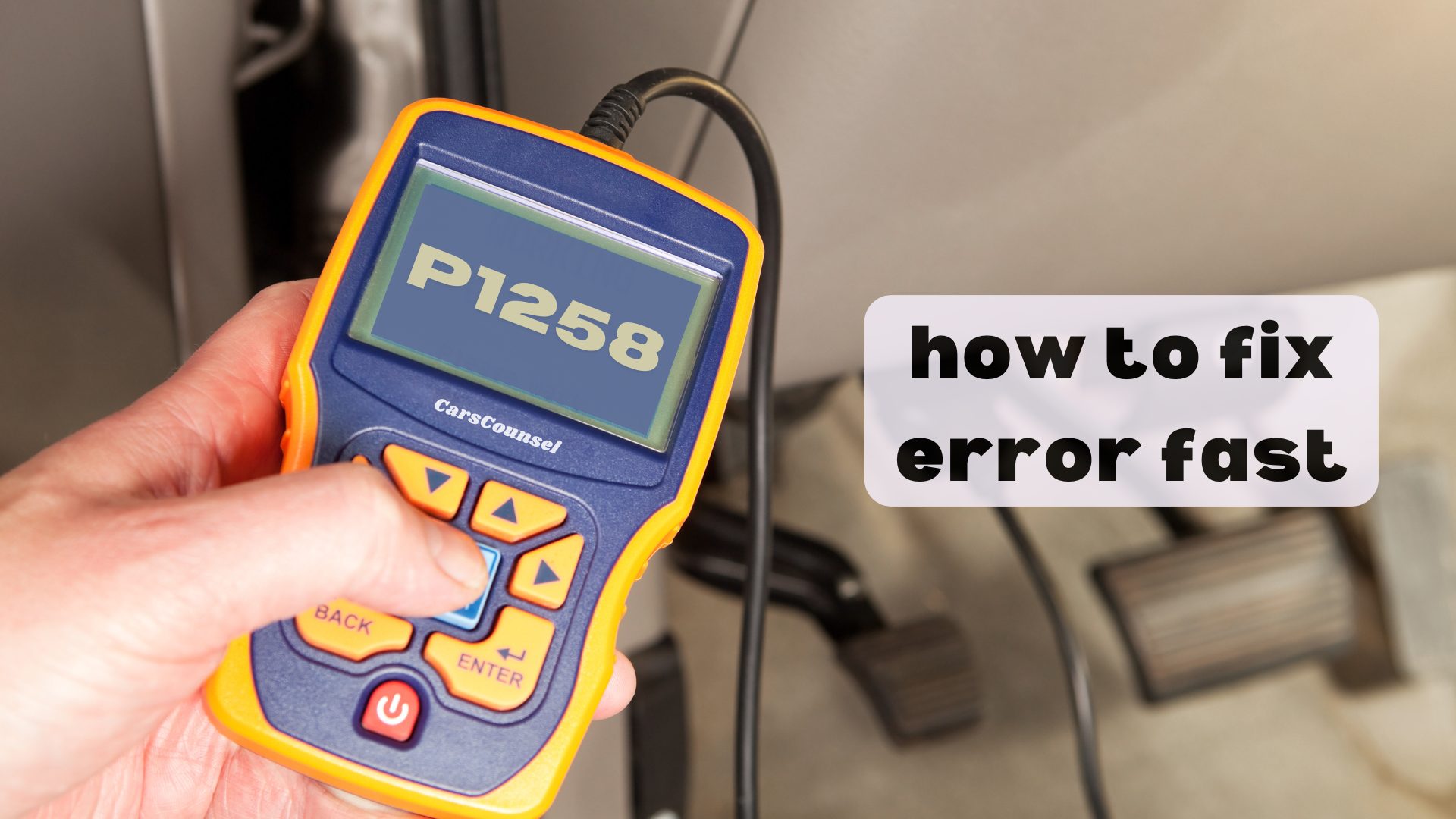Imagine driving on a hot summer day when your car’s engine suddenly starts to sputter and lose power. You notice the temperature gauge is in the red zone, and the check engine light comes on, flashing the P1258 code.
This fault code indicates the Engine Coolant Overtemperature Protection Mode is active, which means your engine is at risk of serious damage. But what’s causing this overheating issue, and how can you fix it before it’s too late? The answers lie in understanding the underlying causes and symptoms of this code, and we’ll delve into them together.

Quick Navigation
Key Takeaways
- The P1258 code is triggered when the engine coolant temperature exceeds the specified threshold, limiting engine performance to prevent damage.
- Low coolant levels, malfunctioning thermostats, faulty water pumps, clogged radiators, and cooling system failures are common causes of overheating.
- Symptoms of P1258 include high engine temperature, illuminated warning light, loss of power, increased fuel consumption, and rough engine operation.
- Repairing the issue requires inspecting coolant levels, checking the thermostat and water pump functions, and identifying the underlying cause of overheating.
- Prompt attention is essential to avoid further engine damage. The average repair cost, including parts and labor, ranges from $200 to $800.
Code P1258 Description
When your vehicle’s onboard computer detects an engine coolant temperature exceeding the specified threshold, it triggers the Engine Coolant Overtemperature Protection Mode, which is indicated by the diagnostic trouble code P1258.
This mode is designed to prevent engine damage by limiting engine performance.
The code is triggered when the engine coolant temperature reaches a certain point, typically due to coolant leaks or other issues.
As a result, you may notice a loss of engine power or performance, increased fuel consumption, and the engine running rough or stalling.
It’s essential to address this issue promptly to avoid further engine damage.
Common Causes of Overheating
Since the Engine Coolant Overtemperature Protection Mode is triggered by high engine coolant temperatures, it’s vital to identify the root cause of the issue.
You’ll need to investigate possible failures in your cooling system. Check your coolant levels, as running low can cause overheating. A malfunctioning thermostat can also prevent your engine from cooling properly.
A faulty water pump or clogged radiator can restrict coolant flow, leading to overheating. Additionally, inspect your radiator hoses for blockages or damage that might impede coolant circulation.
Recognizing P1258 Symptoms
Your engine’s warning signs should never be ignored, and the P1258 code is no exception. When your vehicle’s computer system detects an overtemperature condition, it activates the Engine Coolant Overtemperature Protection Mode to prevent engine damage. Recognizing the symptoms of P1258 is vital to addressing the issue promptly.
| Symptom | Description | Action |
|---|---|---|
| High Engine Temperature | Engine temperature gauge reading high | Check coolant levels, inspect thermostat |
| Overheating Warning Light | Engine overheating warning light illuminated on the dashboard | Perform temperature monitoring, check cooling system |
| Loss of Power/Performance | Engine losing power or performance | Check coolant checks, inspect water pump |
| Increased Fuel Consumption | Increased fuel consumption | Inspect cooling fan operation, check radiator |
| Rough Engine Operation | Engine running rough or stalling | Perform coolant checks, inspect thermostat |
Repairing the P1258 Issue
To repair the P1258 issue, you’ll need to identify and address the underlying cause of the engine coolant overtemperature condition.
Start by inspecting your coolant levels and performing routine coolant maintenance to guarantee they’re at the recommended levels. If your coolant levels are low, topping them off may resolve the issue.
However, if the problem persists, you may need to investigate further to diagnose the root cause. This could involve checking your thermostat, water pump, and cooling fan to certify they’re functioning properly.
Fixing Cooling System Problems
When you’ve ruled out low coolant levels, it’s time to investigate deeper into the cooling system to identify the root cause of the P1258 code. This involves inspecting the radiator, thermostat, water pump, and cooling fan to guarantee they’re functioning correctly. Regular cooling system maintenance, such as radiator cleaning, can help prevent issues that trigger the P1258 code.
| Component | Function | Potential Issues |
|---|---|---|
| Radiator | Dissipates heat from coolant | Clogged or dirty radiator, faulty radiator fan |
| Thermostat | Regulates engine coolant temperature | Stuck or faulty thermostat, incorrect temperature reading |
| Water Pump | Circulates coolant through the engine | Faulty or worn-out water pump, improper coolant flow
Cost of P1258 Code Repairs
The repair bill for a P1258 code can be a significant expense, with costs ranging from a few hundred to over a thousand dollars, depending on the underlying cause and the location of the repair shop.
You’ll want to get repair estimates from multiple shops to compare prices and find the best deal. Keep in mind that labor rates and diagnostic time can influence the final cost.
On average, you can expect to pay between $200 and $800, including parts and labor, but this can vary depending on the specific issue.
When comparing shops, ask about their experience with P1258 code repairs and what’s included in their estimate. By doing your research, you can get a fair price for the necessary repairs.
Diagnosing the P1258 Code
Diagnosing the P1258 code requires a thorough understanding of the vehicle’s cooling system and a systematic approach to identifying the root cause of the problem.
You’ll need to check the coolant levels, looking for signs of leaks or low levels that could be causing the engine to overheat.
Inspect the temperature sensors, ensuring they’re functioning correctly and providing accurate readings.
Check the thermostat operation, water pump function, and cooling fan performance to rule out any malfunctions.
A visual inspection of the radiator and cooling system can help identify any blockages or clogs.
Preventing Future Overheating Issues
To steer clear of future overheating issues, take preventative measures to guarantee your vehicle’s cooling system is in top shape. Regular cooling maintenance is vital to prevent overheating and potential engine damage.
| Cooling Maintenance Tasks | Frequency |
|---|---|
| Check coolant levels and condition | Every 3-6 months |
| Inspect radiator and cooling system for leaks | Every 6-12 months |
| Replace thermostat and water pump as needed | As recommended by manufacturer
More OBD-II Codes
Conclusion
As you get back on the road, bear in mind that your engine is like a high-performance athlete – it needs the right conditions to thrive. If you neglect the warning signs of overheating, it’s like ignoring a marathon runner’s dehydration – the consequences can be severe. Don’t let your engine suffer from heat stroke; address the P1258 code promptly, and you’ll be back to peak performance in no time, with a cooling system that’s firing on all cylinders.

